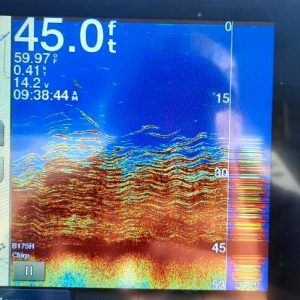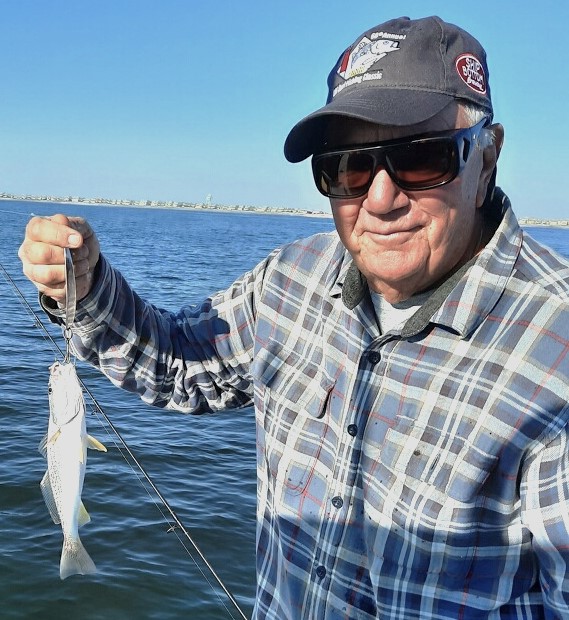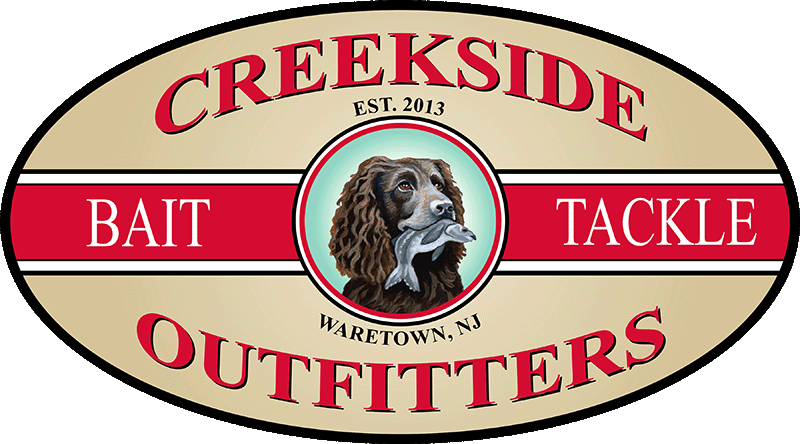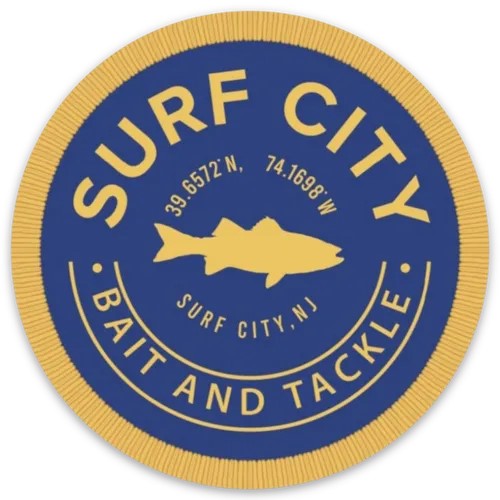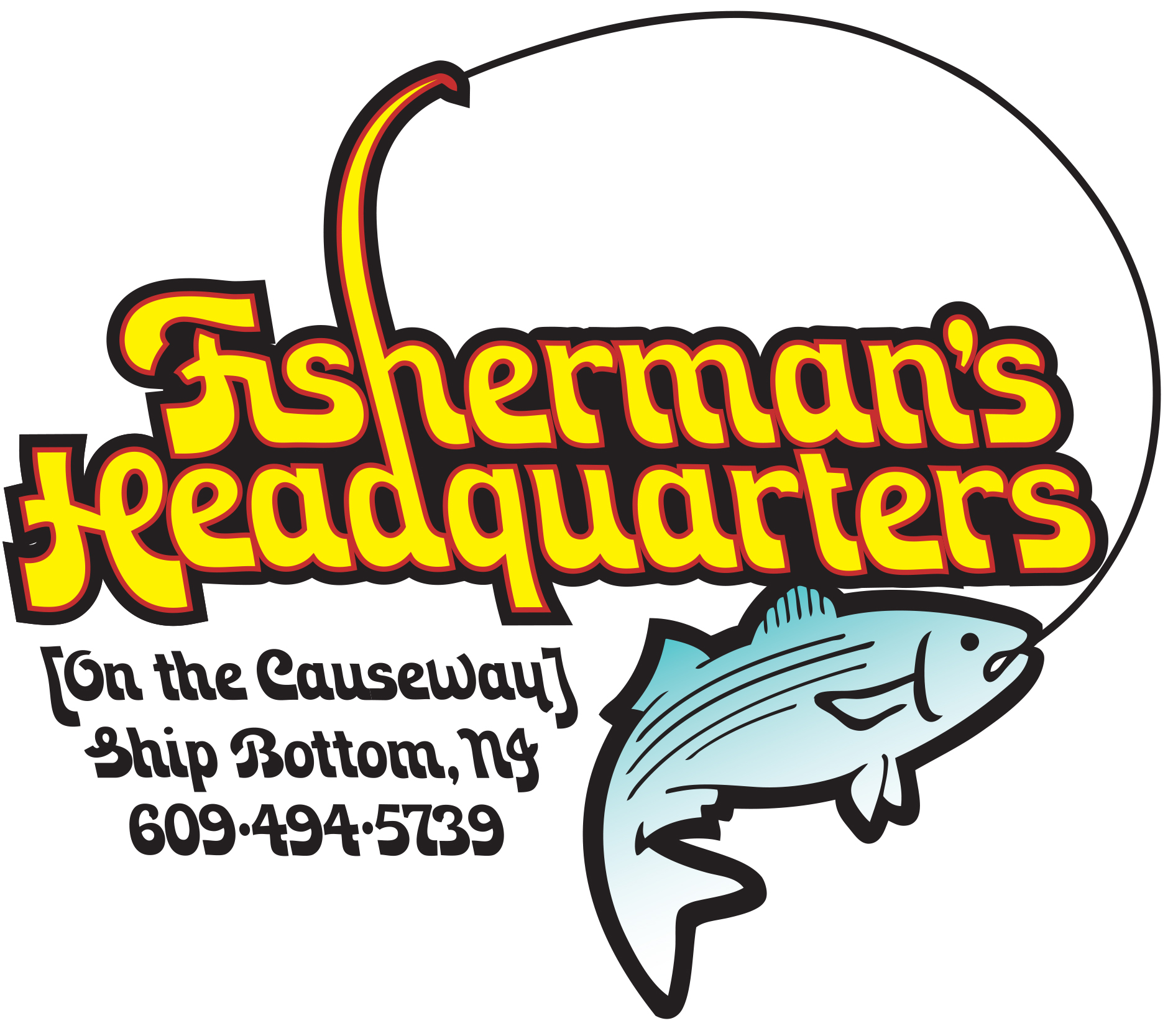Fishing the day after our club dinner was tough, but I couldn’t say no to John Stuebing’s offer to search for Striped Bass. After rounding Holgate, we headed north and quickly found schools of bunker – but no predators were bothering them! We trolled, threw topwater plugs and jigged to no avail.
We headed further north towards the pipeline and saw some really heavy returns. Our jigs barely hit bottom before they were hit by small weakfish (10-11″). We kept thinking a keeper was in the mix, but all fish were identical in size. We continued our search following small bird action and I caught a small bonito that was released. We ended the day trolling back towards Little Egg Inlet without success.
Despite our small success, it was still a great day on the water! Back at the John’s dock, I spoke with a someone cleaning off their boat. He had traveled solo up past Seaside Heights – quite a trip from Tuckerton – and had caught three large stripers 42, 44 and 47″ via snag and drop close to the beach. That blitz was also reported in tonight’s On The Water email report. Sounds like the fall run is starting!